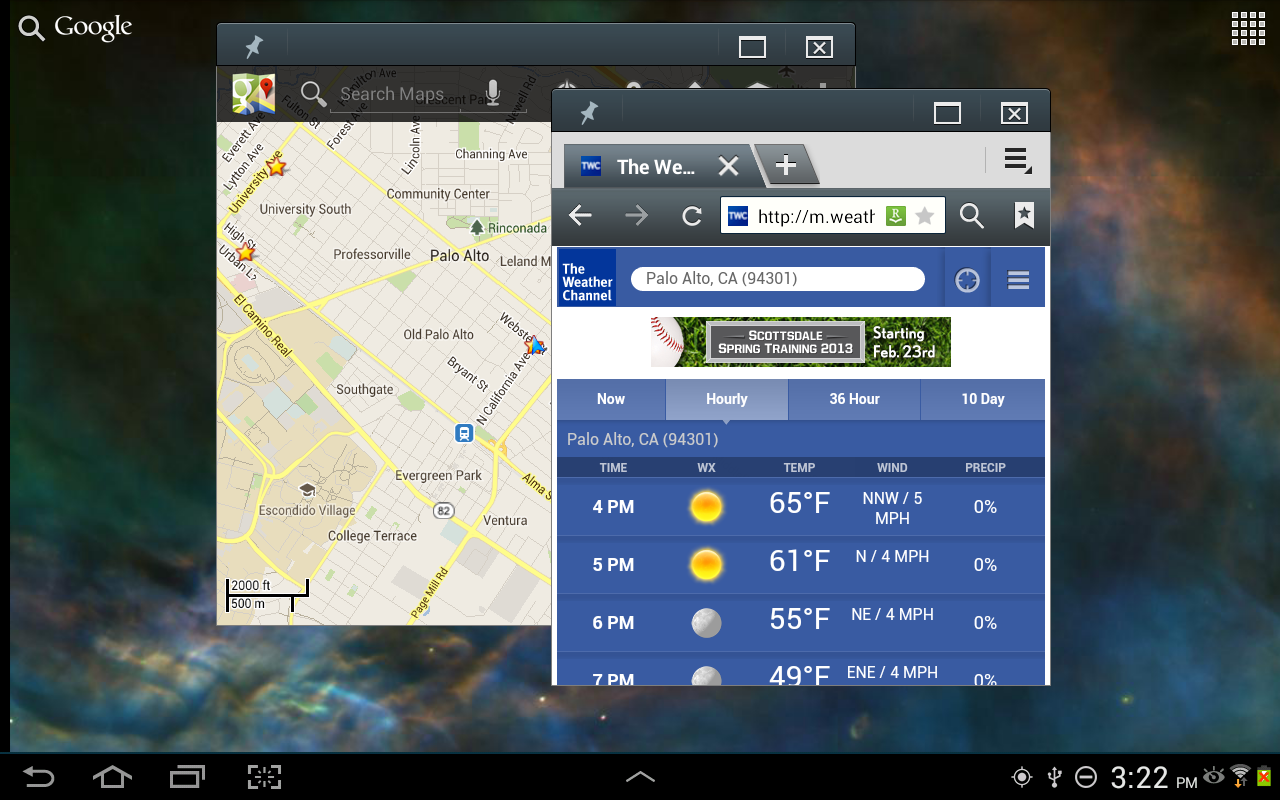It seem that history is indeed repeating itself, as Samsung seems keen to add a feature to its Tablets that has graced PCs for a long, long time, multiple app windows.
In an update to their version of Android on the Galaxy Note 10.1, Samsung has added their own brand of multi-tasking to their
tablet, such that it is now possible to work with multiple applications simultaneously.
Samsung’s TouchWiz interface for Android 4 now allows a select few applications to be launched in windows rather than in full screen, allowing for situations such as viewing a video using the video player while browsing the web, or checking your mail.
The new interface supports a cascade mode that opens applications in Windows, and adds a familiar title bar with a maximise and close buttons. Maximising a window will expand it to the full screen like a normal Android application, while running it in windowed mode allows you to resize the window (within limits) or place it anywhere on screen. Windows can even be pinned so they appear above all other windows.
Also available is the Dual View, which has a simpler interface, showing two windows side-by-side. In this view you have have two applications displayed at the time, with a movable divider in between them that allows you to change the ratio of the screen area available to each. Apps can still be maximised in this mode.
Android in itself does not support multi-windowing, so this feature is exclusive to Samsung’s TouchWiz interface, and even then it wont work with all Android apps. A couple of Google apps and some Samsung apps seem to be all that support this feature for now.
Even as Microsoft is simplifying its tablet interface, and taking away basic features of multi-windowing, Android is introducing the feature at least in some capacity. Despite being a great feature it does come across as a little underwhelming, considering its severe limitations on what is essentially a solved problem. It is unlikely that these restrictions will go away unless Android introduces a windowing system of its own; perhaps it is finally time for that.




